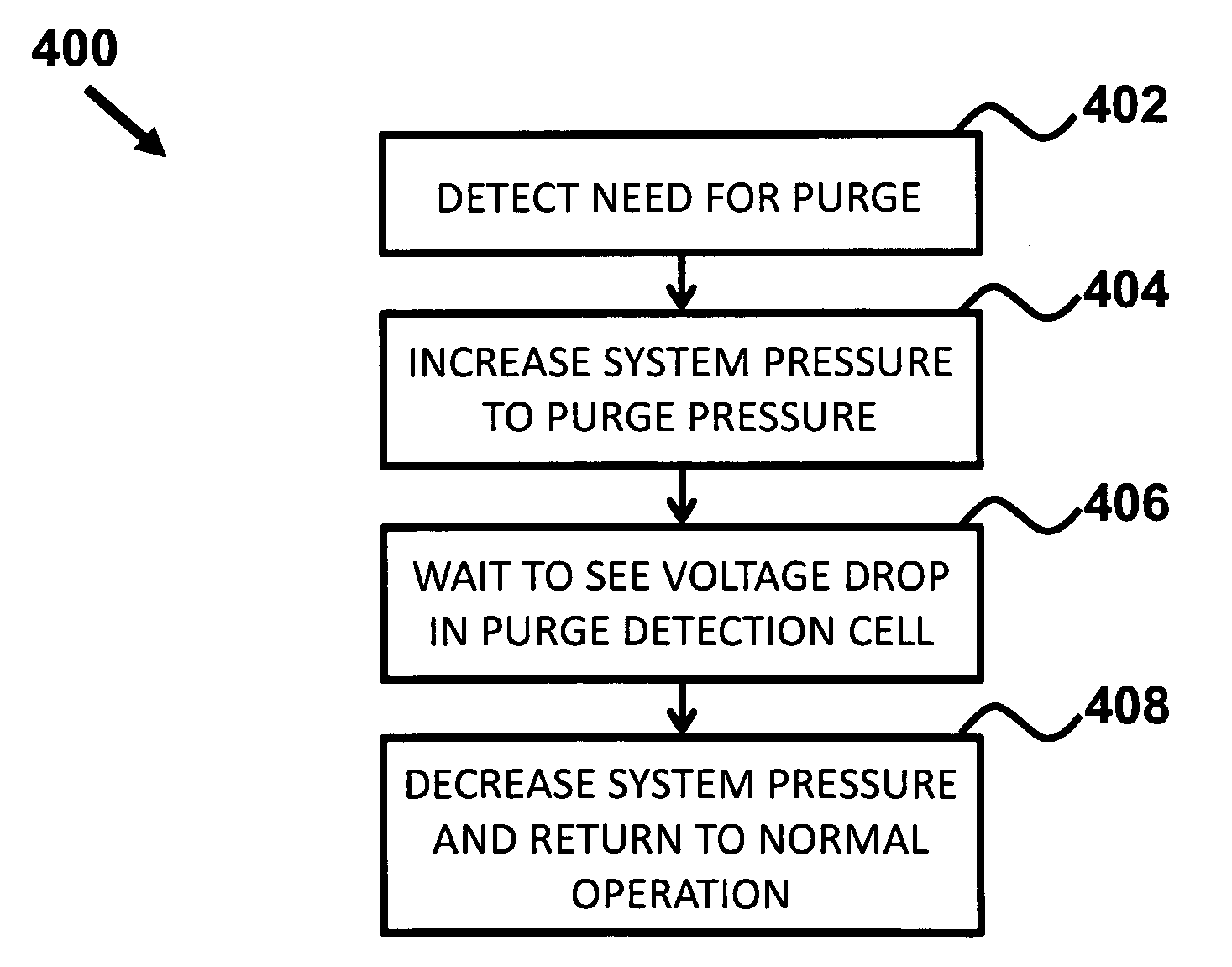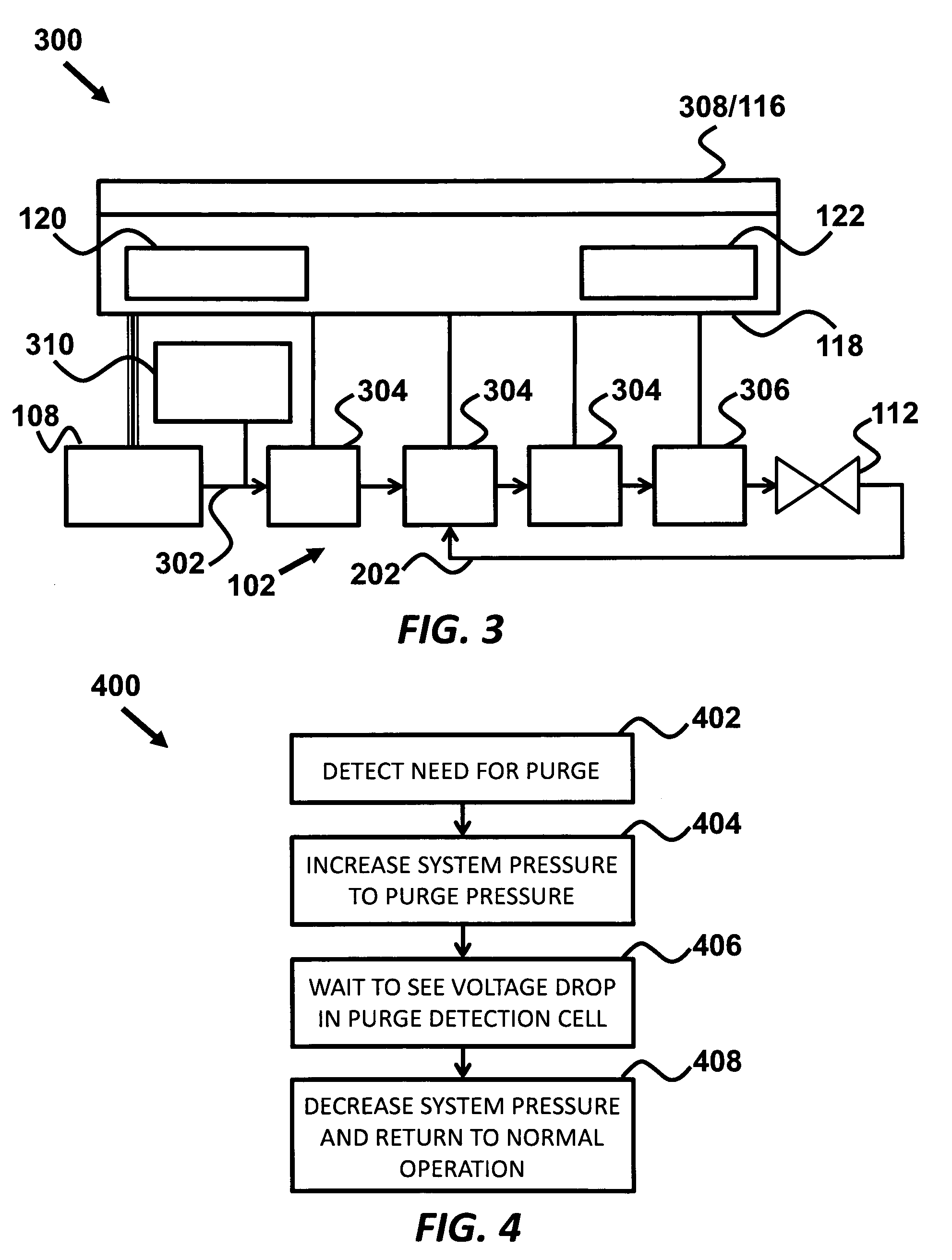Controller for fuel cell operation
a fuel cell and control device technology, applied in the field of fuel cell control, can solve the problems of high cost, high power consumption, and active valves
- Summary
- Abstract
- Description
- Claims
- Application Information
AI Technical Summary
Benefits of technology
Problems solved by technology
Method used
Image
Examples
embodiment 500
[0033]FIG. 5 shows an auxiliary fuel cell embodiment 500 that includes a purge exhaust 202 routed to an anode of an auxiliary fuel cell 502, while the cathode of the auxiliary fuel cell 502 is supplied with oxygen by air, either from an active air-move 506 such as a fan or preferably passively by diffusion. The purge exhaust 202 from the passive purge valve 112 is directed to a hydrogen sensor such as an anode of an auxiliary fuel cell 502, where the purge complete module 122 determines when the non-fuel matter 110 has been purged by sensing when the output 504 of the auxiliary fuel cell 502 exceeds a threshold level, where the output 504 can be either voltage or current. Initially when inert gas and other non-fuel matter 110 such as water vapor / condensation, is being purged into the anode the open cell voltage of the auxiliary fuel cell 502 is low and cell current when loaded is minimal. Once all of the inert gas 110 has been purged and instead pure hydrogen is being purged the ope...
embodiment 600
[0034]According to another embodiment FIG. 6 shows a catalyst bed embodiment 600 that includes a purge exhaust 202 routed to a catalyst bed 602 in the presence of ambient air 604. Here the purge complete module 122 determines when the non-fuel matter 110 has been purged by sensing when the temperature 606 of the catalyst bed 602 exceeds a threshold level. The structure of the catalyst bed allows mixing of the purge exhaust 202 with ambient air 604 e.g. by diffusion, or venturi entraining. Initially, when inert gas and other non-fuel matter 110 such as water vapor / condensation, is being purged into the catalyst bed the gases pass through the catalyst bed without any reaction. Once all of the inert gas 110 has been purged and instead pure hydrogen is being purged, the hydrogen mixed with oxygen from ambient air catalytically combust at the catalyst bed, releasing heat and water vapor. The measured temperature increase 606 of the catalyst bed 602 is a good indication of hydrogen purity...
PUM
| Property | Measurement | Unit |
|---|---|---|
| pressure | aaaaa | aaaaa |
| hydrogen flow rate | aaaaa | aaaaa |
| current | aaaaa | aaaaa |
Abstract
Description
Claims
Application Information
 Login to View More
Login to View More - R&D
- Intellectual Property
- Life Sciences
- Materials
- Tech Scout
- Unparalleled Data Quality
- Higher Quality Content
- 60% Fewer Hallucinations
Browse by: Latest US Patents, China's latest patents, Technical Efficacy Thesaurus, Application Domain, Technology Topic, Popular Technical Reports.
© 2025 PatSnap. All rights reserved.Legal|Privacy policy|Modern Slavery Act Transparency Statement|Sitemap|About US| Contact US: help@patsnap.com



